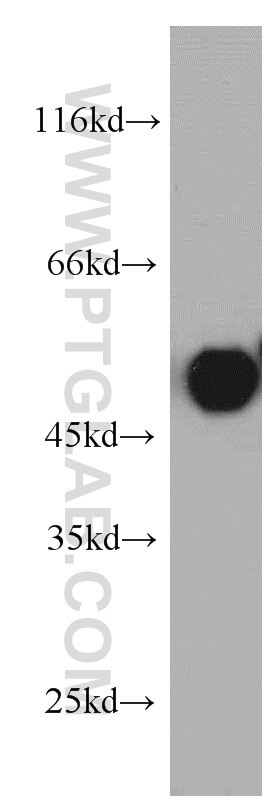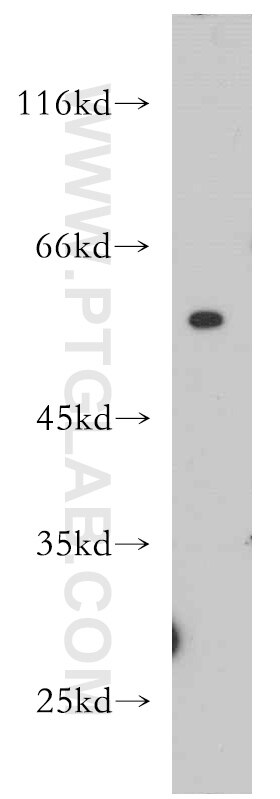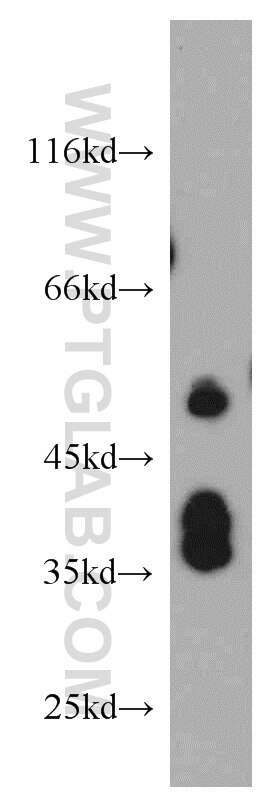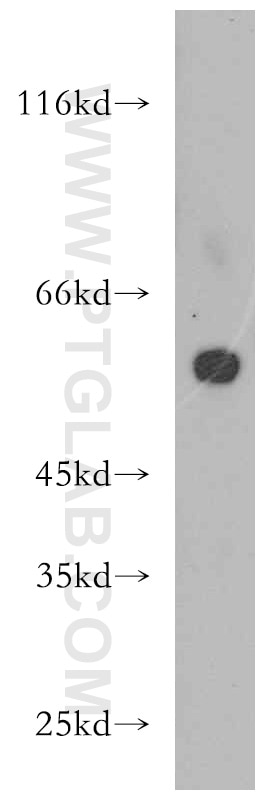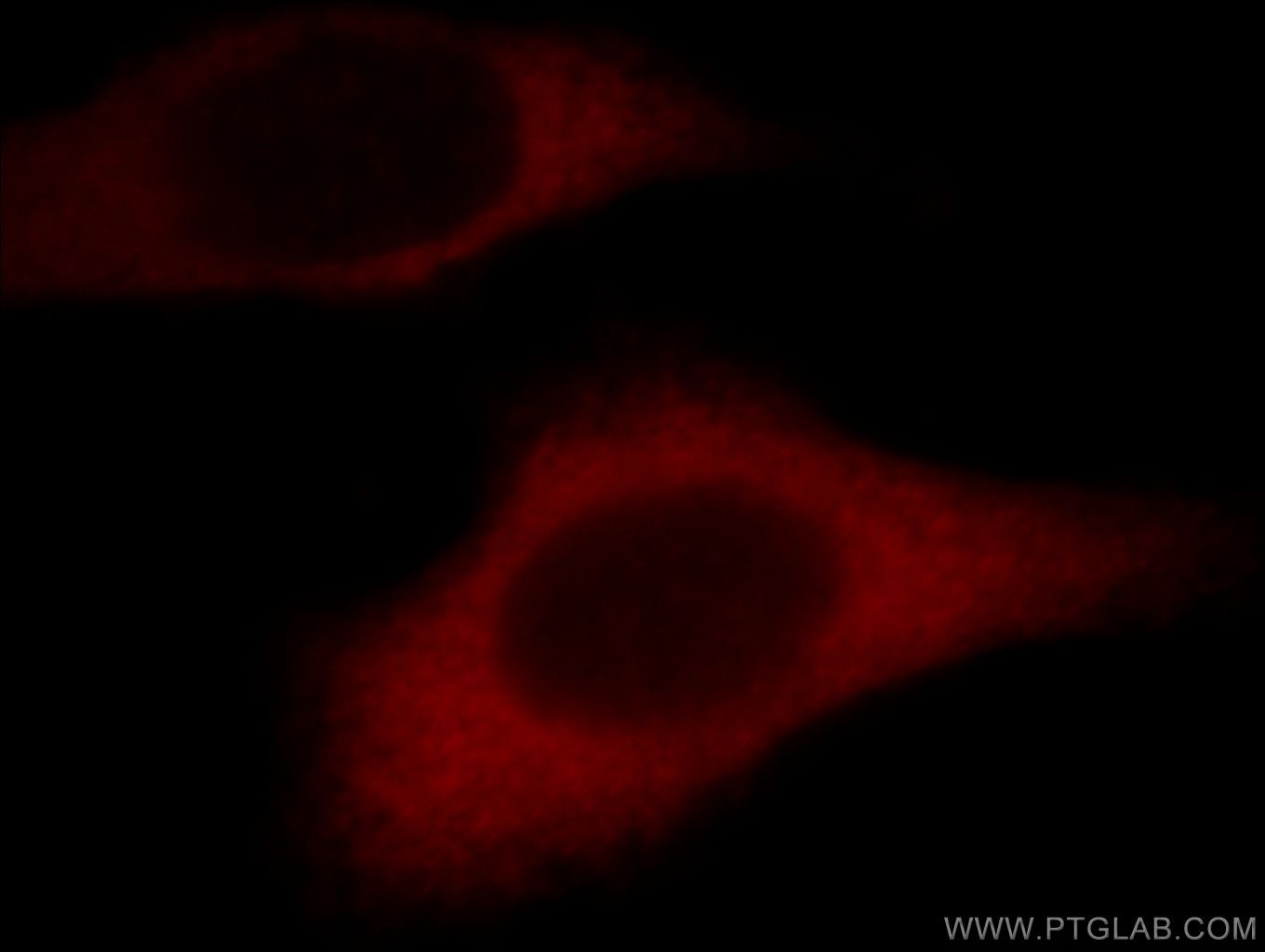Validation Data Gallery
Tested Applications
| Positive WB detected in | HeLa cells, HepG2 cells, human testis tissue, mouse lung tissue |
| Positive IF/ICC detected in | HepG2 cells |
Recommended dilution
| Application | Dilution |
|---|---|
| Western Blot (WB) | WB : 1:1000-1:4000 |
| Immunofluorescence (IF)/ICC | IF/ICC : 1:10-1:100 |
| It is recommended that this reagent should be titrated in each testing system to obtain optimal results. | |
| Sample-dependent, Check data in validation data gallery. | |
Product Information
21163-1-AP targets TRIP6 in WB, IF/ICC, ELISA applications and shows reactivity with human, mouse, rat samples.
| Tested Reactivity | human, mouse, rat |
| Host / Isotype | Rabbit / IgG |
| Class | Polyclonal |
| Type | Antibody |
| Immunogen | TRIP6 fusion protein Ag15149 相同性解析による交差性が予測される生物種 |
| Full Name | thyroid hormone receptor interactor 6 |
| Calculated molecular weight | 476 aa, 50 kDa |
| Observed molecular weight | 50-55 kDa |
| GenBank accession number | BC004249 |
| Gene Symbol | TRIP6 |
| Gene ID (NCBI) | 7205 |
| RRID | AB_10732813 |
| Conjugate | Unconjugated |
| Form | Liquid |
| Purification Method | Antigen affinity purification |
| UNIPROT ID | Q15654 |
| Storage Buffer | PBS with 0.02% sodium azide and 50% glycerol , pH 7.3 |
| Storage Conditions | Store at -20°C. Stable for one year after shipment. Aliquoting is unnecessary for -20oC storage. |
Background Information
TRIP6 (thyroid receptor-interacting protein 6), also known as ZRP-1 (zyxin-related protein 1), is a member of the zyxin family that has been implicated in actin reorganization and cell motility. Trip6 has been proposed to transport signals from the cell surface to the nucleus.
Protocols
| Product Specific Protocols | |
|---|---|
| WB protocol for TRIP6 antibody 21163-1-AP | Download protocol |
| IF protocol for TRIP6 antibody 21163-1-AP | Download protocol |
| Standard Protocols | |
|---|---|
| Click here to view our Standard Protocols |
